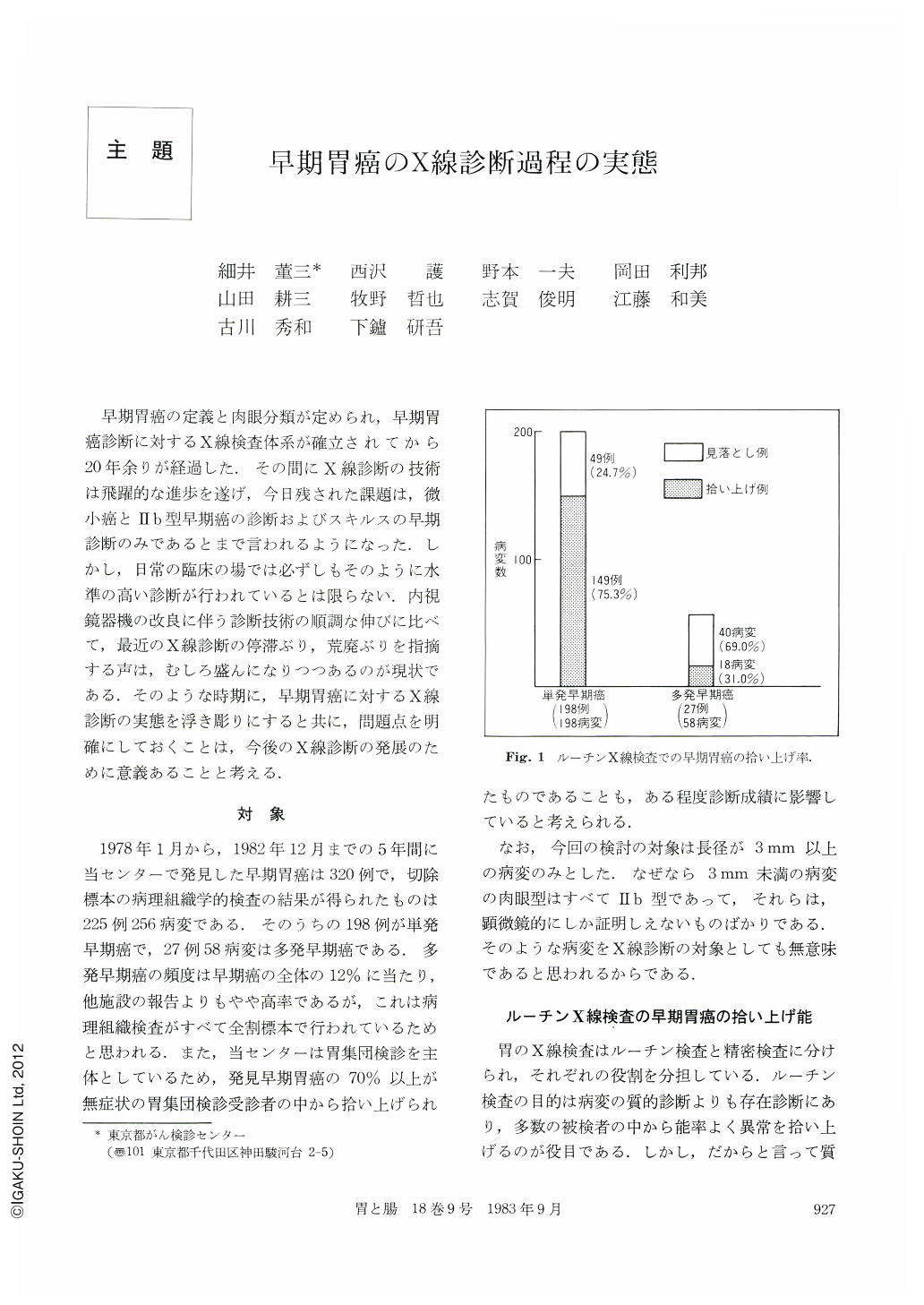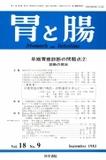Japanese
English
- 有料閲覧
- Abstract 文献概要
- 1ページ目 Look Inside
早期胃癌の定義と肉眼分類が定められ,早期胃癌診断に対するX線検査体系が確立されてから20年余りが経過した.その間にX線診断の技術は飛躍的な進歩を遂げ,今日残された課題は,微小癌とⅡb型早期癌の診断およびスキルスの早期診断のみであるとまで言われるようになった.しかし,日常の臨床の場では必ずしもそのように水準の高い診断が行われているとは限らない.内視鏡器機の改良に伴う診断技術の順調な伸びに比べて,最近のX線診断の停滞ぶり,荒廃ぶりを指摘する声は,むしろ盛んになりつつあるのが現状である.そのような時期に,早期胃癌に対するX線診断の実態を浮き彫りにすると共に,問題点を明確にしておくことは,今後のX線診断の発展のために意義あることと考える.
We analysed the realities in radiological diagnosis of early gastric cancer for over five years. Materials were 225 cases of early gastric cancer with 256 lesions which were found among examinees of gastric cancer mass survey who were entirely or almost asymptomatic and thinking themselves as healthy person. Picking-up rate of the early gastric cancer by routine radiological examination was 75.3% for solitary cancer and 31.0% in multiple cancer. As regard to location of the cancer, the easiest location to be diagnosed was M region and the posterior wall indicating 81.8% and 86.4% respectively. On the other hand, the most difficult location was C region and the anterior wall demonstrating 54.8% and 64.4% respectively. Regarding the size of the cancer, 20 mm was the critical size and when the cancer was more than 20 mm in size, the picking-up rate was more than 80% but when it was less than 20 mm, the rate was merely 58.5%. Therefore, the diagnostic problem of routine radiological examination is not detecting minute cancer or Ⅱb type lesion, but more primitive one including ① how to cope with overlooking multiple cancer, ② how to pick-up small lesions of less than 20 mm and ③ how to make a diagnosis of cardiac lesions.
On the other hand, precise radiological examination was able to detect solitary early cancer in 197 out of 198 cases (99.5%) and only one case could not be detected. Thus, such a big difference between routine radiological examination is the problem in radiological diagnosis. However, reviewing 49 cases of early gastric cancer which were overlooked by the routine radiological examination, it was found that 17 cases were misinterpreted and 12 cases were overlooked because of inadequate technique of radiological examination.
Therefore, by minimizing the range of physician diagnostic abilities and making efforts to improve total diagnostic technique, we presume that the present routine radiological examination could pick-up the solitary gastric cancer up to 90% of the cases.

Copyright © 1983, Igaku-Shoin Ltd. All rights reserved.


